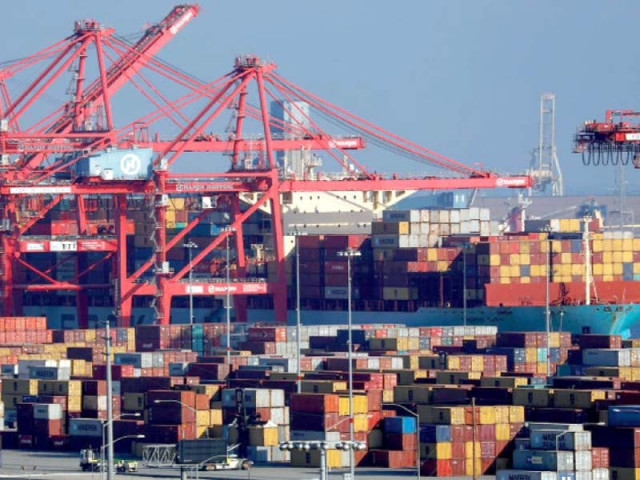Look east for commercial diplomacy
With exception of China, most eastern markets are ignored by Pakistan’s trade policy

On any given day, we can look towards east to witness the rising sun and towards the west for gradual setting.
As a national economic and trade policy planner of Pakistan, one must do this often to find rays of hope from the east, particularly in the current era and for the next few decades.
Looking towards the east, China is certainly the leader in economic and trade expansion in recent decades, but Pakistan should not ignore the potential of Asean economies and beyond, such as Japan, South Korea, Australia and Pacific countries.
A little tilt towards northwest will also generate many opportunities in the Commonwealth of Independent States (CIS) and Russian markets.
Historically, Pakistan’s economic and trade (mainly export) interests have been focused on European and US markets, with the recent exception of UAE and Afghanistan markets but these are very peculiar cases. This may have been due to ease of exports, market for Pakistani export products ie textile, leather, rice, etc and trade preference schemes such as the Generalised Scheme of Preferences (GSP).
This has worked fine but one must not ignore the difference between market expansion in these traditional markets and eastern markets. There is recent wave of protectionism or at least slowing down of globalisation that is termed “slowbalisation” in western markets.
Moreover, these markets have moved towards services-oriented economies and with basic textile and agricultural commodities, Pakistani exporters may not really benefit from any growth in these markets.
On the contrary, the eastern markets are expanding at a rapid pace with huge demand for manufacturing and primary services sectors. In fact, the expansion in eastern markets is largely due to the positioning of these economies as manufacturing hubs for western markets, and also due to growing level of indigenous demand.
With the exception of China, most of the expanding eastern markets are ignored by the trade policy of Pakistan. Even with China, with whom Pakistan has a bilateral free trade agreement (FTA), the true trade potential has not been harnessed yet, particularly when it comes to Pakistan’s exports to China.
With the size of market and expansion that China offers, one should have expected, by now, 10 times of current Pakistani exports - $2 billion per year. It may be good to have at least a brief assessment, by relevant ministries, on why this potential has not been translated from political statements to actual export numbers.
Beyond China, one hardly notes a meaningful commercial diplomacy by Pakistan in the eastern and Pacific markets. In order to change this status quo, the following five points may be considered for further deliberations on this topic:
1 Pakistan should seek an opportunity to join the recently concluded Regional Comprehensive Economic Partnership (RCEP). RCEP is a free trade agreement among Australia, Brunei, Cambodia, China, Indonesia, Japan, Laos, Malaysia, Myanmar, New Zealand, the Philippines, Singapore, South Korea, Thailand and Vietnam, providing the largest FTA platform in the world. Joining the RCEP may be a long and complex process, but why not start exploring this unparalleled opportunity.
2 There is a need to develop and implement proactive and dynamic commercial diplomacy towards Central Asian and Russian markets. This geographic area has been almost ignored at the government level and a few hundred million dollars of annual exports are the result of sporadic private sector efforts. Recently, the Shanghai Cooperation Organisation (SCO) has become active in economic integration of its member states, and Pakistan being one of the members may play an active role in it. Another avenue to enter into these markets is exploring an FTA with the Eurasian Economic Union (EEU). The EEU is a recently concluded (2014) economic treaty with membership comprising Armenia, Belarus, Kazakhstan, Kyrgyzstan and Russia.
• Map out the possibilities to join global supply chains that are generated/ routed through the eastern markets. There are plenty of opportunities even for primary and intermediate product exporters to integrate into those supply chains. This will naturally lead towards value addition and technology transfer in the longer run.
1 Develop the services sector, such as information technology, data and analytics, finance and other business process outsourcing, to enter into the expanding eastern markets. Some of the developed eastern markets such as Australia, Japan and South Korea have potential for low-cost offshore supply of such services.
2 Appoint new, or reassign out of mature western markets, commercial diplomats in each of the eastern markets. They should be given specific and measurable export targets and serve as marketing representatives for introducing Pakistani supply capacities in these markets.
The writer is an international economist
Published in The Express Tribune, January 25th, 2021.
Like Business on Facebook, follow @TribuneBiz on Twitter to stay informed and join in the conversation.



















COMMENTS
Comments are moderated and generally will be posted if they are on-topic and not abusive.
For more information, please see our Comments FAQ